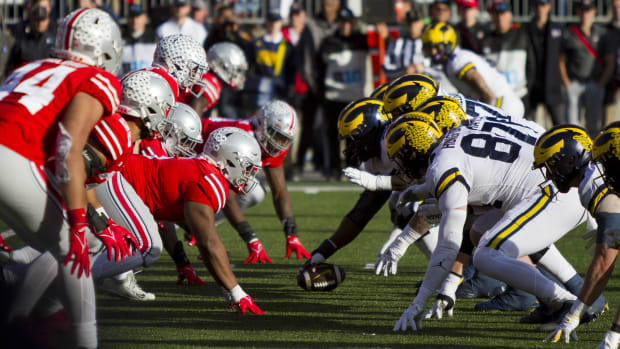Winter Logistics and Dome Stadium Options for Big Ten Football
With Big Ten commissioner Kevin Warren doubling down this week on conference plans to move football into 2021, one can speculate how these January games could be managed on campuses with less than ideal winter weather.
Unlike warmer conditions of fellow Power Five Conferences like the SEC, Big 12 and ACC (all still playing at the moment), the geographical “bottom” of the Big Ten is College Park, Md. at 38.98 degrees North latitude. To compare, no SEC counterparts have a location as high as the most southern Big Ten school.
The University of Missouri (in Columbia), the highest geographical SEC school, checks in just below the Terps at 38.85 degrees North latitude... and this is just comparing the two schools closest to each other.
When we look at the northern extremes for the Big Ten, these locations are often known for low temperatures, high snowbanks, and comfortable indoor basketball. Playing football in the depths of winter has not been an option before and, now that it may come to fruition, it's certainly not ideal.
The average high temperature in January for the northernmost school in the conference (University of Minnesota) is a chilly 22 degrees. Average low? Just above six degrees. Compare that with the southernmost SEC school (University of Florida) seeing an average January climate of over 68 degrees.
So, what exactly would a Big Ten season look like logistically if the conference is forced indoors?
Last week, a source with direct knowledge of the situation told Bucknuts that the conference games would likely be held in NFL domes. Options include Lucas Oil Stadium (Indianapolis), Ford Field (Detroit), and U.S. Bank Stadium (Minneapolis). But how convenient would these options be for the entire conference?
The University of Minnesota is a chip shot field goal away from U.S. Bank Stadium, whereas inclement weather in Ann Arbor would force the Wolverines to Ford Field more than 40 miles away. Schools such as Purdue and Indiana are both over an hour to Lucas Oil Stadium should weather disrupt plans for an outdoor winter contest. With no realistic dome options in Ohio, the Buckeyes would find themselves around three hours from both Detroit and Indianapolis.
The Big 10 school most impacted by a January schedule would possibly be the Wisconsin Badgers (Madison, Wisc). The second-most northern school in the conference behind the Golden Gophers, Madison is a full FOUR HOURS from any of the three specified indoor sites.
With Camp Randall weather already questionable in the late fall, it's tough to imagine a scenario where the Badgers can play anything in the winter close to its hostile confines. Also, how long in advance will certain venues need to be scheduled? Or how quickly could the Big Ten flip a setting based on weather? Those are questions for another day.
With this winter season currently gaining steam due to the possibility of persuading future NFL Draft picks to suit up, the logistics of these games will most certainly become a focus for Big Ten administrators in the coming weeks and months. One thing we do know, outdoors or indoors, it will be a conference season like we have never seen before.
Stay tuned to BuckeyesNow and all of our social media outlets (@BuckeyesNowSI) on Twitter, Facebook and Instagram for continued coverage!






